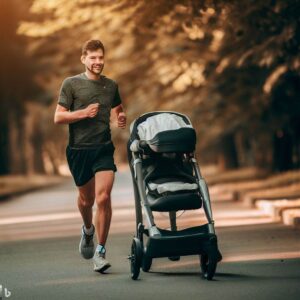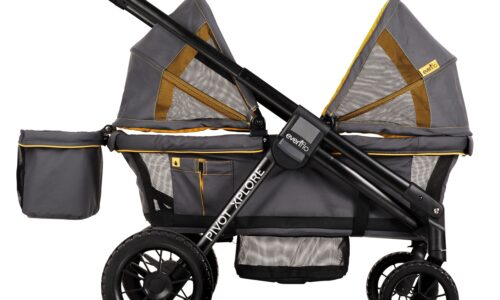
Whether you are a seasoned runner or a new parent eager to maintain an active lifestyle, a jogging stroller can be a game-changer. These specially designed strollers allow you to combine your love for running with the joy of spending quality time with your child. However, like any piece of equipment, a jogging stroller requires regular maintenance to ensure its optimal performance and longevity.
Maintaining your jogging stroller not only enhances its functionality but also ensures the safety and comfort of your child during your runs. By following a few simple guidelines and incorporating a regular maintenance routine, you can keep your stroller in top shape, ready to conquer the miles ahead.
In this article, we will delve into some essential tips and best practices for maintaining your jogging stroller, allowing you to get the most out of your running experience while keeping your little one safe and comfortable. From cleaning and lubricating to inspecting key components, we’ll cover all the necessary steps to maximize the performance and durability of your jogging stroller.
We will explore the importance of maintaining proper tire pressure, ensuring smooth suspension, and checking for wear and tear. Additionally, we’ll discuss the significance of cleaning the stroller’s frame, fabric, and harness to keep it free from dirt, debris, and potential allergens. By following these maintenance strategies, you’ll not only optimize the stroller’s performance but also extend its lifespan.
Furthermore, we will provide valuable insights on storage and transportation techniques to protect your jogging stroller during periods of inactivity or when you’re on the go. By implementing appropriate storage practices and utilizing protective covers, you can shield your stroller from the elements and avoid unnecessary damage.
Remember, a well-maintained jogging stroller is a reliable companion that can accompany you on countless adventures, providing a comfortable ride for your child while supporting your active lifestyle. So, let’s dive into the world of jogging stroller maintenance and discover how you can ensure its maximum performance and longevity for many joyful runs to come.
Check Your Tires
A jogging stroller features air-filled tires designed to traverse various terrains. Additionally, its front wheel can be locked for running or left swiveling as part of everyday use – the ability to secure its position being critical for safety and stability when jogging.
Strollers with small wheels are not designed for running or jogging due to lack of suspension to withstand faster speeds and absorb rough surfaces like roads or sidewalks. Parents seeking strollers that will allow them to exercise should consider dedicated jogging models as a solution.
Experts advise waiting until your child has developed enough head and neck control to stay in a jogging stroller during a run before taking them out for one. Running will allow your little one to enjoy some fresh air, burn calories, strengthen muscles, and strengthen bones all at the same time! Just before hitting the pavement though, remember to perform a quick “mommy/daddy check,” always having water ready both you and your little one!
Clean the Fabric
Fabric of your jogging stroller is particularly susceptible to wear and tear, so it is essential that it is regularly maintained. Consult the instruction manual to ascertain if the fabric can be washed in the machine as well as which cleaning products may or may not be recommended for your specific stroller model.
Once you have all of the supplies at hand, start by vacuuming your stroller to remove dirt, dust, and crumbs. Next, spot clean any fabric stains using mild soap and water or disinfectant baby wipes; for smaller mold or mildew stains try using lemon juice on affected areas; test first on an inconspicuous part of fabric to make sure it will not discolour or damage it.
Use dry silicone-based lubricant to keep wheels and brakes free of dirt or debris. Regularly inspecting and cleaning your jogging stroller will help avoid unexpected breakdowns during runs.
Check the Stroller’s Frame
Jogging strollers provide babies with additional support and cushion from the jarring movements associated with running. Most are constructed from steel that has been powder-coated for longevity and protection against corrosion, with locking swivel front wheels to prevent them from suddenly going in another direction at high speed.
As part of your stroller search, make sure that its parking brake is easy to engage and has visual indicators to confirm its full engagement. Also be sure to select a stroller with an easily-reclining seat and large canopy for your child’s protection.
Babies should only ride in a jogging stroller once they have received the OK from their pediatrician and have achieved strong neck strength and head control, typically between 6-8 months of age. Always consult with both your pediatrician and stroller manufacturer’s guidelines for safety recommendations before riding your child in one of these vehicles.
Check the Brakes
Jogging strollers tend to be more expensive than standard strollers, but their purpose is clear: keeping your child comfortable on road runs or trails. Typically equipped with three large tires made from durable rubber for stability, as well as an anti-jarring suspension system to absorb bumps in the road or uneven surfaces without creating shockwaves of impact, they’re designed specifically for adventure.
Most jogging strollers include hand-operated deceleration and parking brakes to provide optimal braking performance, while adaptable models may feature car seat connectors to facilitate seamless transitions from vehicle to stroller.
Jogging with a stroller is an efficient and fun way to burn calories while spending quality time outdoors. As you become more used to running with the stroller, it’s essential that you switch hands often in order to build endurance, agility and muscular balance as well as building core, leg and arm strength before running for extended periods with it. Once approved by your physician, daily stroller jogs can become family activities which promote healthier lifestyles for both parents and children.

